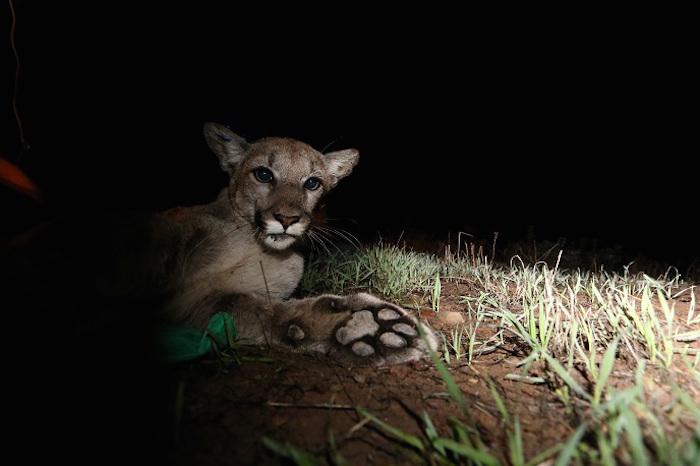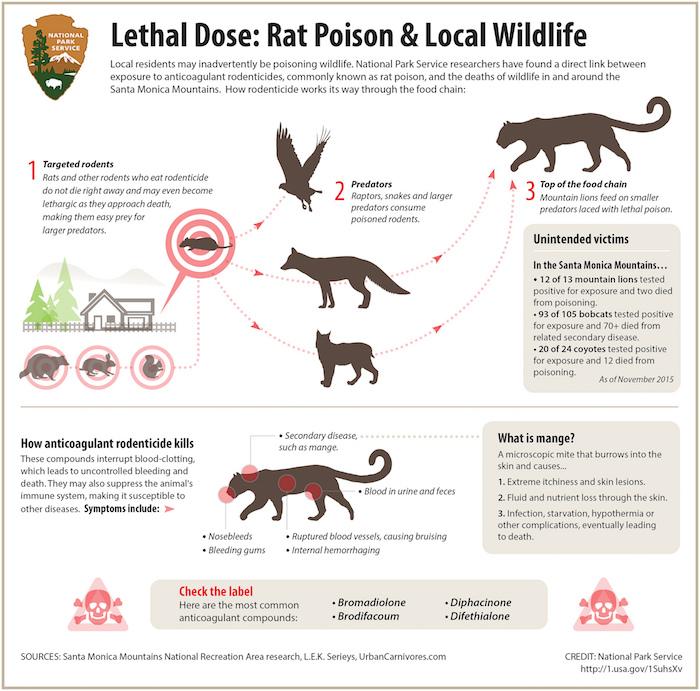
Lab studies have confirmed that P-34, photographed waking up from a nap some time ago, died from ingesting a form of rat poison/NPS
A young mountain lion found dead in California in late September died from ingesting a form of rat poison, according to lab results.
The subadult female, P-34, was part of a National Park Service study into the movements of mountain lions in and around Santa Monica Mountains National Recreation Area. Her body was found by a hiker in Point Mugu State Park on September 30.
"This is the latest indication that local wildlife continues to be exposed to these rodent poisons," said Dr. Seth Riley, wildlife ecologist for the National Recreation Area. "We hope that P-34's death will continue to raise awareness about how anticoagulant rodenticides work their way up the food chain, often with deadly effects."
The lab found both first- and second-generation anticoagulants in the animal's liver. Recent legislation banned the retail sale of second-generation anticoagulant rodenticides, but they are still available for use by licensed applicators, according to a Park Service release. First-generation anticoagulant rodenticides are widely available for purchase. The compounds found in P-34's system were brodifacoum, bromadiolone, chlorophacinone, difethialone and diphacinone.
Suggestions on controlling rodents without anticoagulant rodenticides are available here.

Although it's not known exactly how P-34 ingested the poisons, researchers believe mountain lions are exposed through secondary or tertiary poisoning, meaning that they consume an animal that ate the bait, such as a ground squirrel, or an animal that ate an animal that consumed the bait, such as a coyote.
P-34's death marks the study's third case of mortality directly from rodenticide poisoning, though National Park Service researchers have documented the presence of the compounds in 12 out of 13 mountain lions that they have tested, including in a three-month-old kitten.
The California Animal Health & Food Safety Lab also found that P-34 had contracted a bacteria known as leptospira. Leptospira has been found in other mountain lions, but is more common in rats and canids. The bacteria can only be transferred to humans if there is contact with the exposed animal's urine. Although she had some kidney disease from the leptospirosis, the bacteria did not appear to play a role in her death.
P-34 made headlines last December when she was discovered lounging under a trailer in a mobile home park in Newbury Park. Earlier that day a resident snapped a stunning photo of P-34 walking in her backyard.
Her sibling, P-32, was struck and killed by a vehicle on Interstate 5 this August after making a remarkable journey out of the Santa Monica Mountains.
The National Park Service began studying mountain lions in and around the Santa Monica Mountains in 2002. The purpose of the study is to determine how they survive in an increasingly urbanized environment. Scientists are currently tracking 10 animals in the region.



Add comment